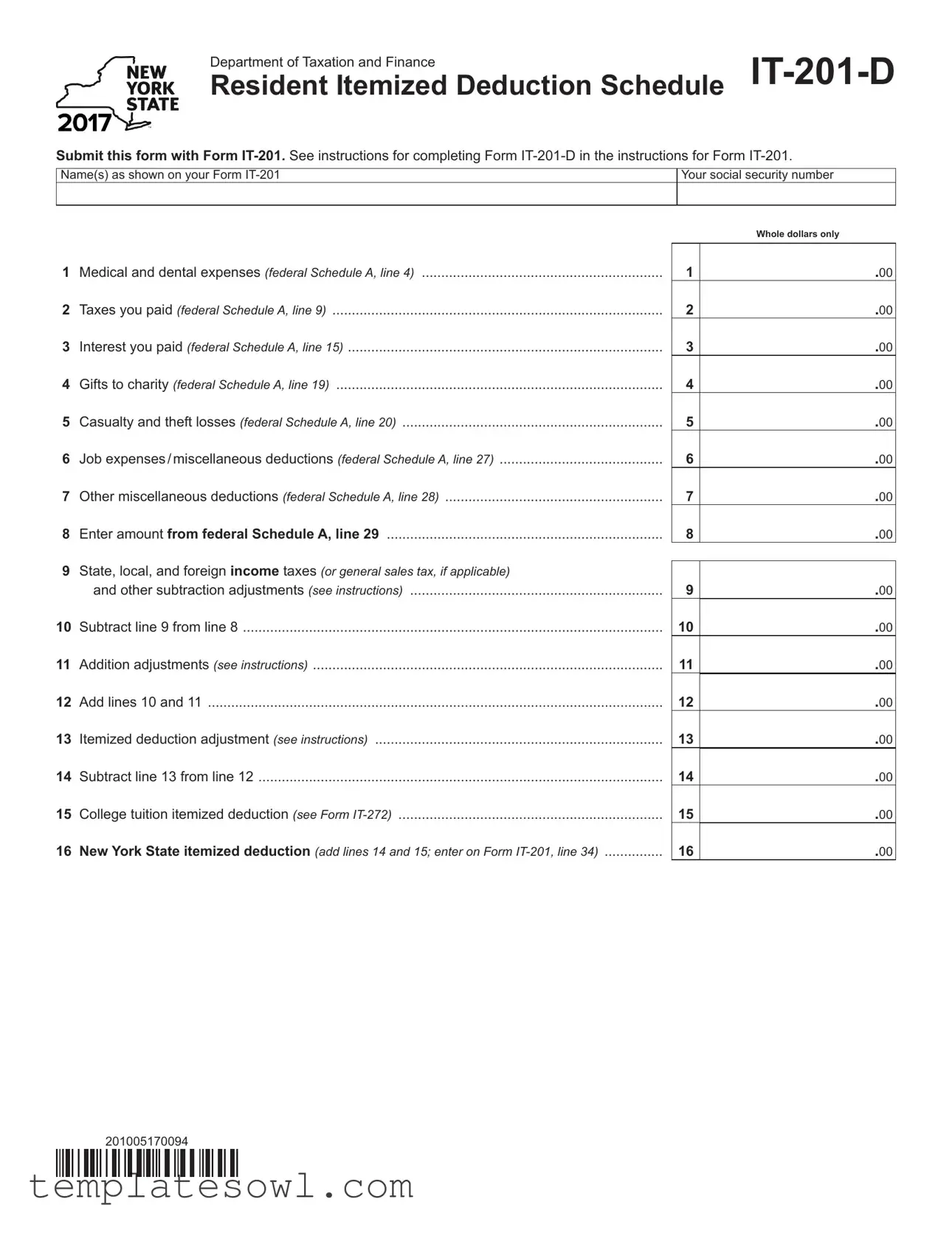What is the purpose of the NYS IT-201-D form?
The NYS IT-201-D form, known as the Resident Itemized Deduction Schedule, serves a specific function in the New York tax filing process. It allows residents to itemize deductions they have accrued during the tax year. By submitting this form along with Form IT-201, taxpayers can detail expenses related to medical and dental care, taxes paid, interest, charitable gifts, and other deductions, ultimately aiding in lowering their taxable income. This structured approach helps ensure that all eligible deductions are accounted for, providing potential tax savings.
Who needs to complete the IT-201-D form?
Individuals who are filing their tax returns as residents of New York State need to complete the IT-201-D form if they choose to itemize their deductions rather than taking the standard deduction. It is crucial for those whose itemized deductions exceed the standard deduction amount. By thoroughly documenting their expenses through this form, taxpayers can present a comprehensive view of their finances, which may lead to significant tax benefits.
What information is required on the IT-201-D form?
When completing the IT-201-D form, taxpayers must provide their names as shown on Form IT-201, as well as their social security numbers. The form requires the reporting of various expense categories including medical and dental expenses, taxes paid, gifts to charity, and miscellaneous deductions. Each line item must reflect whole dollars only, simplifying the reporting process. Additionally, taxpayers will need to compute certain adjustments, which may include additions or subtractions, to derive their New York State itemized deductions accurately.
How can I file the NYS IT-201-D form?
The IT-201-D form must be submitted as part of your overall tax return, specifically accompanying Form IT-201. Taxpayers have the option to file their forms electronically or by mail. For electronic filing, many tax preparation software programs include the IT-201-D form as part of their service. If choosing to file by mail, ensure that the completed IT-201-D form is attached securely to the IT-201 form before submission to the Department of Taxation and Finance. It is important to adhere to submission deadlines to avoid any penalties or interest charges.

